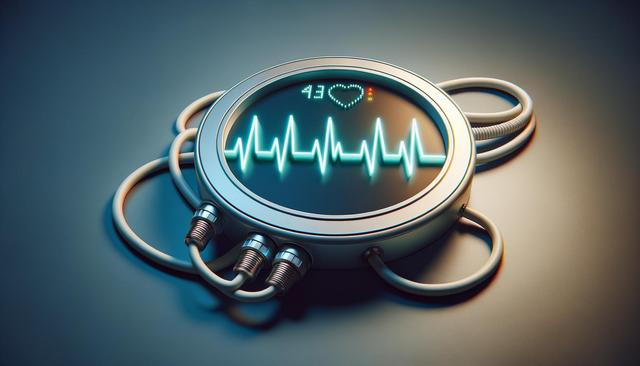Understanding What Atrial Fibrillation Is
Atrial fibrillation, commonly referred to as Afib, is a type of arrhythmia, or irregular heart rhythm, that affects the upper chambers of the heart (the atria). In a person with Afib, the heart’s electrical signals become chaotic, causing the atria to quiver instead of contracting properly. This abnormal rhythm can lead to blood pooling in the heart, increasing the risk of blood clots, stroke, and other cardiovascular complications. While Afib can be intermittent or persistent, recognizing its presence early can be crucial in managing its effects and preventing more serious outcomes.
There are different types of Afib, including:
- Paroxysmal Afib: Episodes come and go, usually lasting less than a week.
- Persistent Afib: The irregular rhythm continues for more than seven days.
- Permanent Afib: The heart rhythm doesn’t return to normal, and long-term treatment is needed.
Each type can present differently in individuals, making awareness of signs and symptoms essential.
Common Physical Symptoms to Watch For
Afib symptoms can vary widely from person to person. Some individuals may not notice any symptoms at all, while others may experience noticeable and disruptive physical effects. The most commonly reported signs include:
- Rapid or irregular heartbeat
- Fluttering or pounding sensation in the chest
- Shortness of breath, especially during physical activity or at rest
- Fatigue and lack of energy
- Dizziness, lightheadedness, or fainting
- Chest discomfort or pressure
These symptoms may occur suddenly or develop gradually. In some cases, they may be mistaken for other conditions, such as anxiety or panic attacks. If these signs persist or worsen, it’s important to seek a medical evaluation to determine the cause and appropriate treatment.
Why Some People Don’t Have Symptoms
Interestingly, many people with Afib do not experience noticeable symptoms, a condition known as “silent atrial fibrillation.” This asymptomatic form is especially common among older adults and those with underlying health conditions such as high blood pressure or diabetes. Silent Afib can still lead to serious complications, including stroke, even in the absence of traditional warning signs.
Because of this, it’s important for individuals at higher risk to undergo regular health checkups. Monitoring heart rate and rhythm through wearable devices or routine electrocardiograms (ECGs) during doctor visits can help detect silent Afib early.
Risk factors that increase the likelihood of developing silent Afib include:
- Advanced age
- History of heart disease
- Hypertension (high blood pressure)
- Diabetes or thyroid disorders
- Obesity and sleep apnea
Understanding that Afib isn’t always accompanied by symptoms can encourage more proactive monitoring and early intervention.
When to Seek Medical Attention
Knowing when to consult a healthcare provider is critical in managing Afib effectively. If you notice sudden changes in your heartbeat or experience any of the common symptoms persistently, it’s essential to seek evaluation. Prompt diagnosis can help reduce the risk of complications such as stroke, heart failure, or blood clots.
Seek immediate medical attention if you experience:
- Chest pain or pressure that does not go away
- Difficulty breathing or sudden shortness of breath
- Confusion or trouble speaking
- Fainting or severe dizziness
Even if symptoms seem mild, a visit to your healthcare provider can lead to early detection and more effective management. Diagnostic tools like ECGs, Holter monitors, and echocardiograms are often used to confirm Afib and understand its impact on the heart’s function.
Managing and Monitoring Atrial Fibrillation
Once Afib is diagnosed, the focus shifts to managing symptoms and reducing the risk of complications. Treatment strategies can include medication, lifestyle changes, and in some cases, medical procedures. Medications such as rate control drugs, rhythm control drugs, and blood thinners are commonly prescribed to help regulate heart rhythm and prevent clot formation.
In addition to medical treatment, lifestyle changes may also play a crucial role in managing Afib:
- Maintaining a healthy weight
- Limiting caffeine and alcohol intake
- Controlling blood pressure and cholesterol levels
- Engaging in regular physical activity
- Managing stress through relaxation techniques
Regular follow-ups and monitoring are essential to ensure treatment is effective and to adjust strategies if needed. Many people with Afib can lead full, active lives when the condition is managed appropriately.
Conclusion: Stay Informed and Proactive
Recognizing the signs of atrial fibrillation is an important step toward protecting your heart health. Whether symptoms are clear or barely noticeable, Afib can have serious implications if left untreated. By paying attention to your body, understanding your risk factors, and seeking timely medical advice, you can take control of your cardiovascular well-being. Early detection, appropriate care, and consistent monitoring can make a significant difference in managing this condition and improving quality of life.


